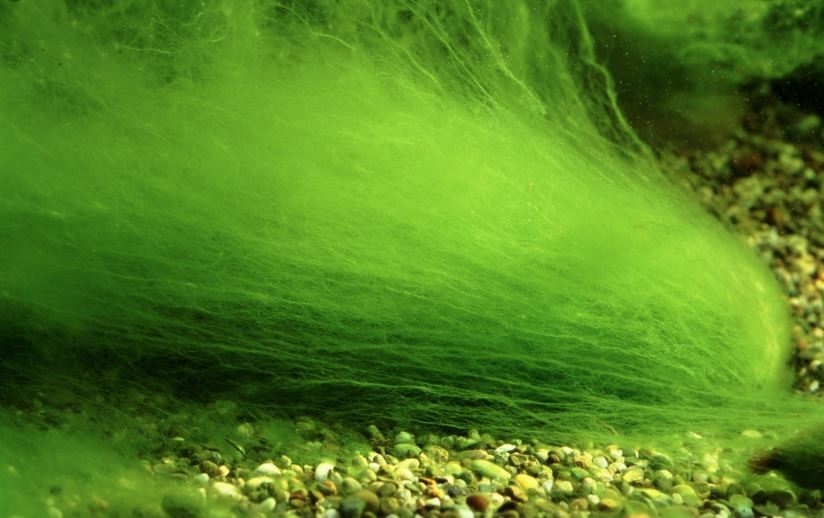
1 – Algae blooms can be the result of various factors, but are usually due to excessive nutrient loading from fertilisers, sewage and animal waste. Identifying and quantifying nutrient sources, both internally and externally, is the first step in developing a successful algae management plan. The original nutrient source should be addressed, if feasible, to minimize the potential for future algae issues. Appropriate proactive management should follow to ensure long-term results.
In some cases, installation and use of an aerator can aid in algae growth mitigation. Aeration systems increase available dissolved oxygen within the water; this supports the breakdown of organic matter and consumption of excess nutrients present, potentially discouraging algae growth. Pond aeration systems are available as submersed diffusers or as floating fountain features. Find out more here.
2 – Another way is to treat your lake with Probiotics. Liquid and dry powder probiotic formulations are best for treating soluble nutrients and suspended organic matter in the water column. They are easily applied to lakes and ponds by spraying, pouring, or tossing the products over the surface of the water.
3 – The most cost-effective way is to apply REGEN-Algaemaster
Pellet probiotic formulations (REGEN-Sediment Pellets) are best for directly targeting the muck layer on the bottom of lakes and ponds that contains nutrients and organic matter. They are easily applied by broadcasting over the targeted area in the lake or pond. All the probiotic products can be used as a standalone treatment or immediately following an herbicide/algaecide treatment to replenish the microbial community.
They also all contribute to reducing nutrients, improving water quality, and enhancing water clarity. However, each probiotic product’s unique qualities should be considered when deciding which product is the best for any application.
